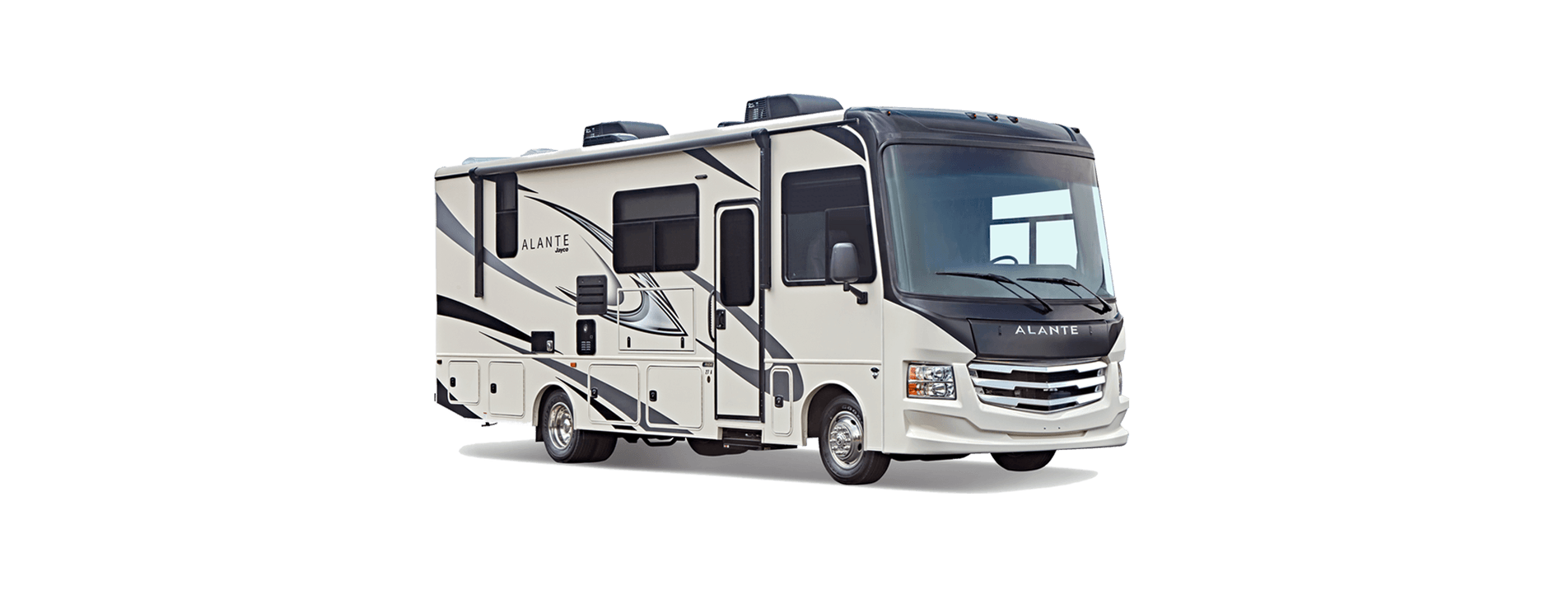Jayco Alante 2023 Power Converter User Manual
Power Converter
The power converter converts 120-volt AC power to usable 12-volt DC power when the shore power cord is connected to an external power source.
The converter has a built-in protective thermal breaker that will shut it down should overheating occur. Overheating can be caused by operating the converter above its maximum power output for an extended period of time, or by an obstruction to its ventilation airflow. To reduce converter heat build keep unnecessary 12-volt lights and motors turned off. Keep the converter cooling fins and fan clear of obstructions.
- USE ONLY A DEEP-CYCLE BATTERY FOR RV USE. Car batteries (CCA rating) are not designed for RV applications.
- If using multiple batteries they must be the same brand and type. Adding more batteries will provide longer use of DC appliances when not on shore power but may reduce charging efficiency.
- The battery works in conjunction with the converter to supply DC power to the RV. A battery is typically only necessary if you do a lot of dry camping or have slideouts and/or a leveling system.
- A reverse polarity fuse provides protection for the converter when a battery is used. If the battery is connected back to the fuse board this fuse would blow preventing damage to the converter.
- Dimming or flickering lights usually indicates an overloaded converter. Remove some of the load by turning off DC lights or appliances.
- The fan is controlled by load. It will begin running at 3 to 6 amp DC draw. It increases in speed with a higher load until 14 to 15 amps. The fan is at maximum speed and stays there even with more load. If the load drops below 6 amps DC, the fan shuts off.
-
Jayco 2023 Top Accessories
[amalinkspro_table id=”32452″ new-window=”on” nofollow=”on” addtocart=”off” /]
Caution
It is important that the fluid level of any connected batteries be checked on a regular basis. All batteries will “gas” and lose some fluid when continuously connected to any charging source (this does not apply to “gel-cell” batteries).
Before checking for converter output voltage, the battery cables must be disconnected from the battery. Make sure the converter is plugged into an AC source (105-132 AC volts). Check the converter output voltage at the battery with a voltmeter. Place the voltmeter probes on the disconnected battery cables. If the voltage reads 13.6VDC with no load, the converter is functioning properly.
If the converter output voltage at the battery reads in the 0.0VDC range, or the battery is not charging, check for:
- An open inline fuse in the battery wire
- An open wire between the converter and the RV battery
- Loose ground connection
- Improper torques
If the converter fuses and AC voltage are good, but the converter output still reads zero volts, the converter is not functioning properly.
Modes of Operation:
Absorption (Normal) Mode: 13.6VDC range. Batteries are being charged, just at a slower rate. The converter will not work without AC input.
Float Trickle Mode: To get your converter into this mode, reduce the load on the system to almost nothing but the battery. Let the system sit for approximately 44 hours. The converter voltage will drop to 13.2VDC. If the converter sees any load during this period or after it is in Float Mode it will revert back to Absorption (Normal) Mode. 13.6VDC.
Bulk Mode: The converter will not jump into the Bulk Mode unless the battery is below 50% of charge, or approximately below 13.2VDC output voltage. There is no way to force it to go into Bulk Mode. Red LED indicates a blown fuse.
Inspection and maintenance
If the 12-volt power converter is not working (auxiliary battery not being charged) check the reverse polarity fuse(s) located on the end of the converter.
There are no customer-serviceable parts inside the converter case and the manufacturer’s warranty will be void if the case has been removed. If you have further concerns contact your dealer. For detailed safety and operating information, refer to the manufacturer’s owner’s manual.
Converter w/Charge Wizard (if so equipped)
Some converters may be equipped with a charge wizard There are (3) possible charging modes; NORMAL, BOOST and STORAGE. The charge wizard will automatically select the best mode to charge your battery. A green LED next to the wizard mode button will indicate by flashes, which mode is currently being used.
Normal Mode:
Green LED flashes once per second; the battery is between 50% and 90% charged. Green LED flashes 2-3 times per second; battery is 90% charged. Output voltage is 13.6VDC and the converter is safely completing the charge of the battery.
Boost Mode:
Green LED is on solid. The output voltage is 14.4VDC to rapidly charge the battery up to 90% of full charge.
Storage Mode:
Green LED flashes every 6-8 seconds. The output voltage has been reduced to 13.2VDC; the RV battery is fully charged and converter is maintaining the charge.
Manual Mode (not recommended): The manual mode button is used to override the charge wizard. Refer to the converter owner’s manual for additional information.
Reverse Battery Protection:
Reverse polarity fuse(s) provide protection for the converter when a battery is used. If the battery is connected backwards to the fuse board a fuse will blow preventing damage to the converter. Four easily accessible fuses are located next to the wizard button. Replace with fuses of the same type and rating.
[amalinkspro_table id=”32446″ new-window=”on” nofollow=”on” addtocart=”off” /]
Reference Links
View Full User Guide: Jayco Alante 2023 User Manual
Download Manuals: https://www.jayco.com/manuals
Jayco 2023 Top Accessories
[amalinkspro_table id=”32452″ new-window=”on” nofollow=”on” addtocart=”off” /]


